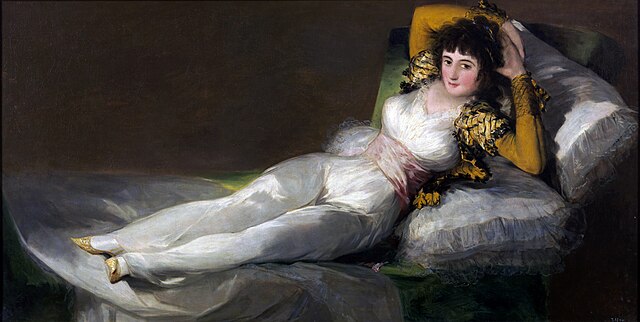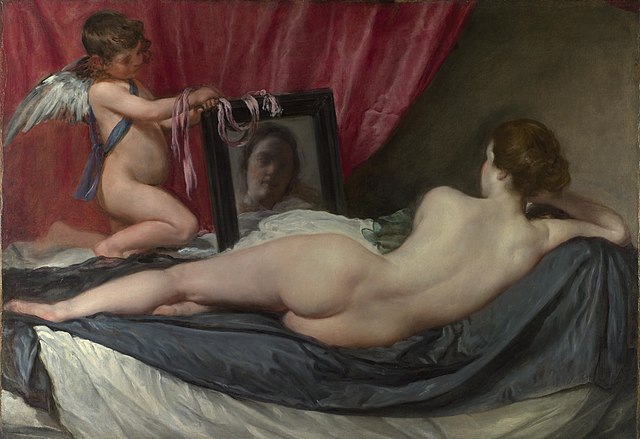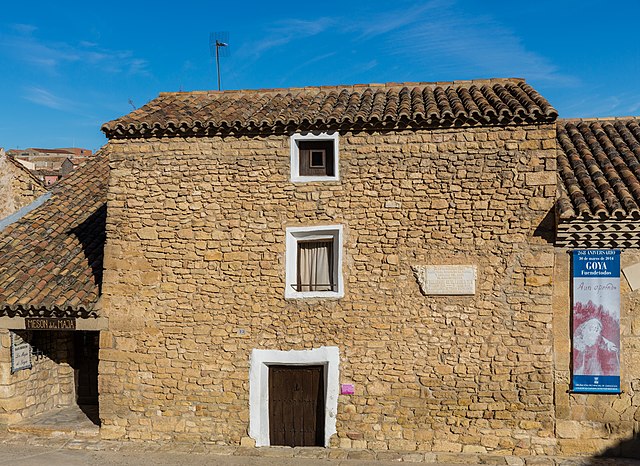The Naked Maja or The Nude Maja is an oil-on-canvas painting made around 1797–1800 by the Spanish artist Francisco de Goya, and is now in the Museo del Prado in Madrid. It portrays a nude woman reclining on a bed of pillows, and was probably commissioned by Manuel de Godoy, to hang in his private collection in a separate cabinet reserved for nude paintings. Goya created a pendant of the same woman identically posed, but clothed, known today as La maja vestida, also in the Prado, and usually hung next to La maja desnuda. The subject is identified as a maja or fashionable lower-class Madrid woman, based on her costume in La maja vestida.
La maja desnuda
La maja vestida, c. 1803. Museo del Prado, Madrid.
Diego Velázquez, Rokeby Venus, c. 1647–51. National Gallery, London.
Goya, The Inquisition Tribunal, c. 1808–12. Goya detested the inquisition and depicted it in harsh terms a number of times, and satirised it in works such as his c. 1820–1823 Witches' Sabbath.
Francisco José de Goya y Lucientes was a Spanish romantic painter and printmaker. He is considered the most important Spanish artist of the late 18th and early 19th centuries. His paintings, drawings, and engravings reflected contemporary historical upheavals and influenced important 19th- and 20th-century painters. Goya is often referred to as the last of the Old Masters and the first of the moderns.
Portrait of Goya by Vicente López (1826), Museo del Prado, Madrid
Yard with Lunatics, c. 1794
Birth house of Francisco Goya, Fuendetodos, Zaragoza
Portrait of Josefa Bayeu (1747–1812)








